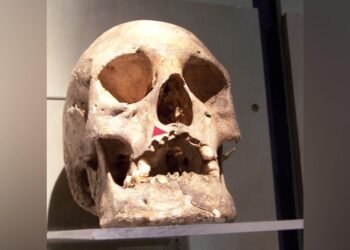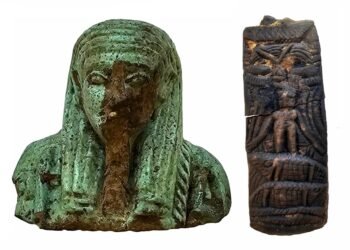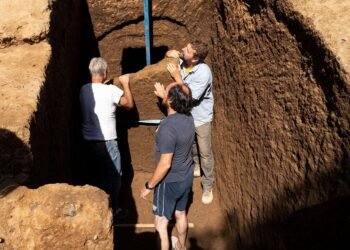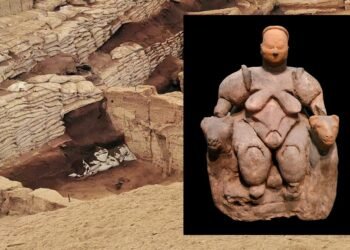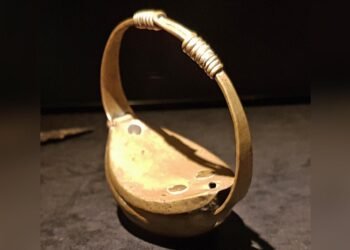An ancient Roman beach buried nearly 2,000 years ago by the eruption of Mount Vesuvius has reopened to the public at the Herculaneum Archaeological Park in southern Italy. The reopening follows extensive conservation efforts aimed at restoring the beach to its pre-eruption condition.
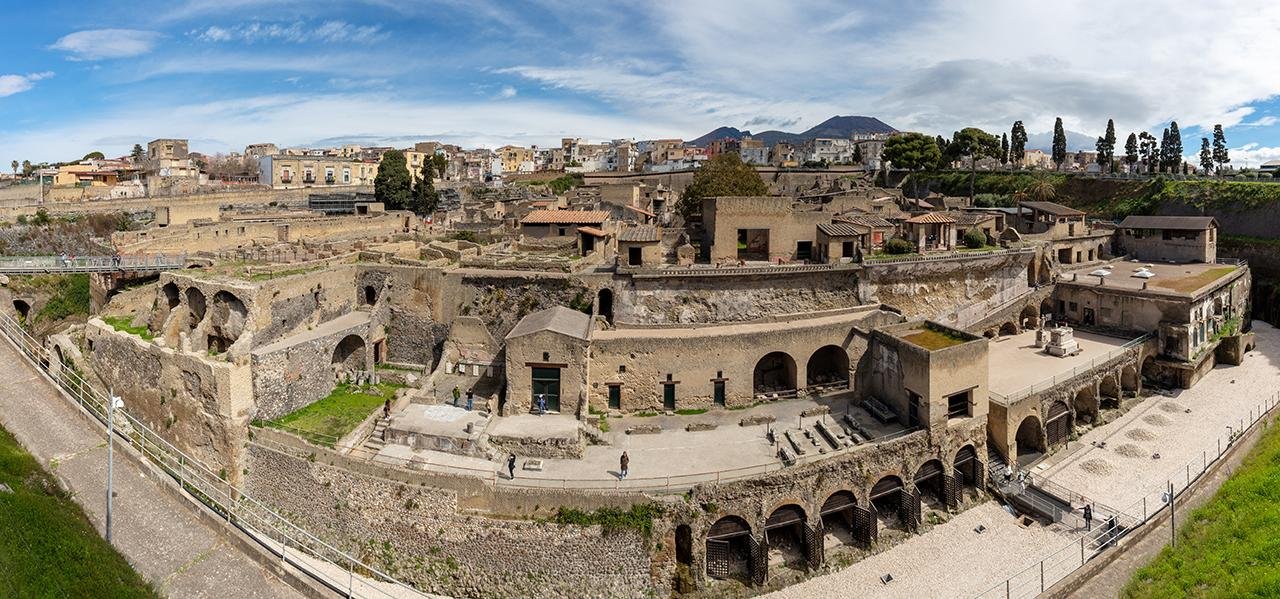
The CE 79 eruption of Mount Vesuvius was a catastrophic event that devastated the busy city of Pompeii and the upmarket resort town of Herculaneum. Both towns were smothered by a three-meter blanket of volcanic ash and pumice. While Pompeii is more widely known, Herculaneum holds significant historical value, boasting wealthier residences adorned with frescoes and mosaic floors.
Herculaneum was rediscovered in the early 18th century during the digging of a well. Excavations have since unearthed lavish villas, organic matter such as fruit and bread, wooden furniture, and hundreds of charred papyrus scrolls. The recent deciphering of passages from one such scroll has provided insights into the final hours of Plato, a pivotal figure in Western philosophy.
The newly restored beach at Herculaneum is now open to the public. Francesco Sirano, the director of the archaeological park, highlighted the extraordinary nature of the site, describing it as “an extraordinary and unique place in the world.” He elaborated, “If we look towards where the sea once was, we become modern explorers of the immense blanket of volcanic flow that covered the city in a few hours, almost sharing the sense of total annihilation.”
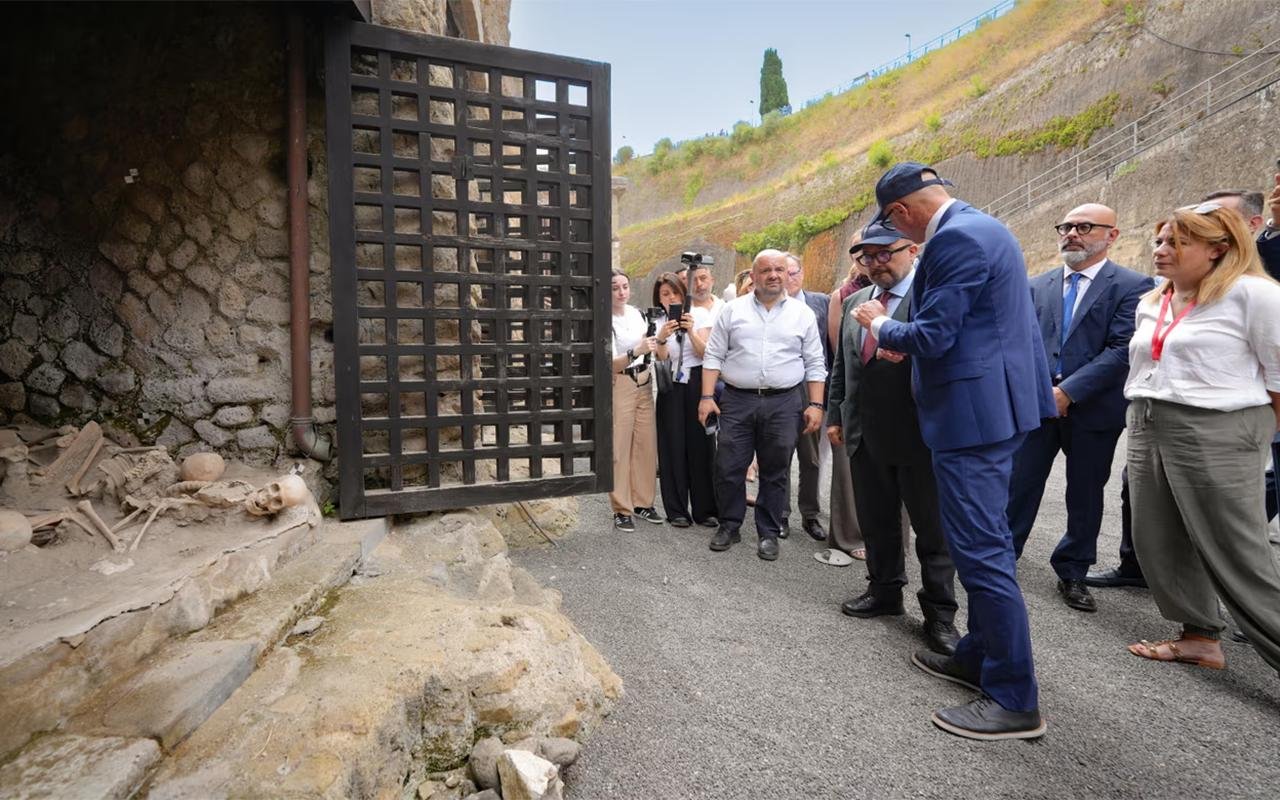
Visitors access the beach by descending through a tunnel, simulating a journey back in time. This reconstruction includes a dark material to mimic the original volcanic black sand while ensuring accessibility for wheelchair users.
During excavations in the 1980s and 1990s, archaeologists discovered the skeletons of over 300 people who had sought refuge in stone boathouses near the shoreline, hoping for rescue by the Roman naval commander Pliny the Elder’s fleet. Tragically, they perished as a cloud of hot gas and ash swept over them the morning after the initial eruption. The remains included men, women, children, and even a soldier.

In 2021, a significant find was made: the skeleton of a man dubbed the “last fugitive,” believed to have been attempting to escape toward the sea with his valuable possessions. This discovery underscored the dire situation faced by Herculaneum’s residents as they tried to flee the impending disaster.
The restoration of the ancient beach has been a collaborative effort between the Italian Ministry of Culture and the Packard Humanities Institute. This project involved draining and filling the area previously occupied by the beach, thereby reducing the risk of flooding and stabilizing the excavation fronts. Francesco Sirano explained, “After three years of intense work aimed at enhancing the ancient beach of the Herculaneum excavations, visitors are given the opportunity to freely access the entire area and to understand the dynamics that led to the burial of the city.”
Italian Minister of Culture Gennaro Sangiuliano emphasized the broader significance of the restoration, stating, “This site has been hugely redeveloped and is becoming a gem. We are within one of the most important archaeological areas in the world with Pompeii, Oplontis, and Herculaneum. The Archaeological Park of Herculaneum is a great historical memory and the value of history.”
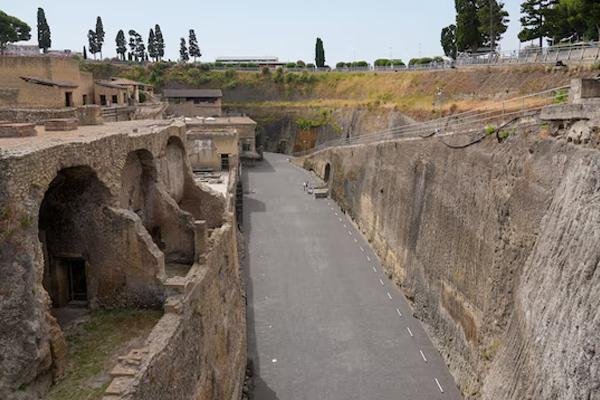
Herculaneum and Pompeii continue to reveal new treasures. Recent discoveries include a banquet room in Pompeii decorated with frescoes of mythological characters inspired by the Trojan War. In addition, technological advancements have enabled further exploration of the ancient sites. A notable example is the use of artificial intelligence to decipher parts of an ancient scroll burned and buried in the eruption.
The reopening of Herculaneum’s beach offers a tangible connection to the past. As visitors walk along the restored beach, they can reflect on the lives lost in the eruption.




